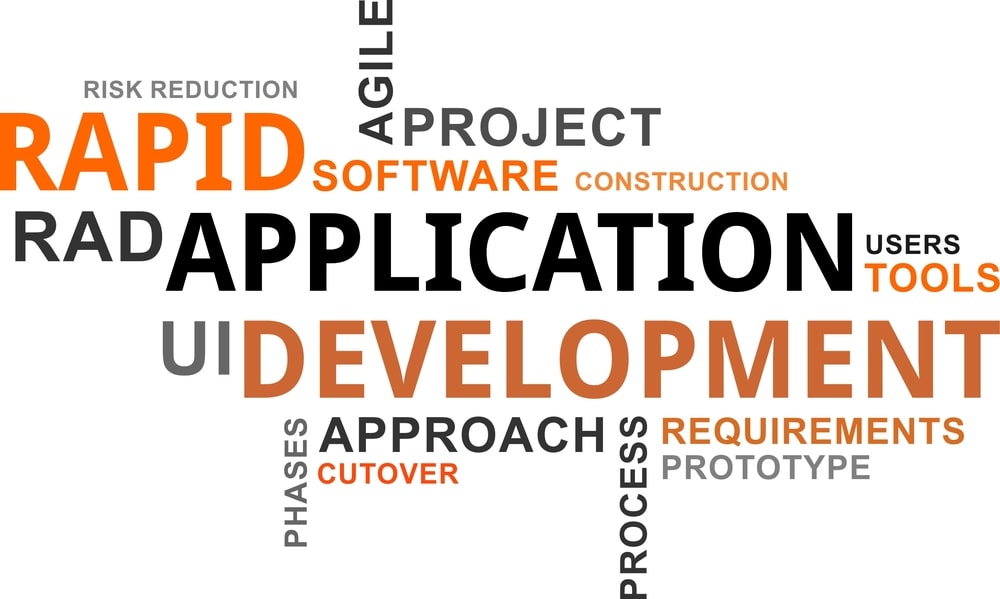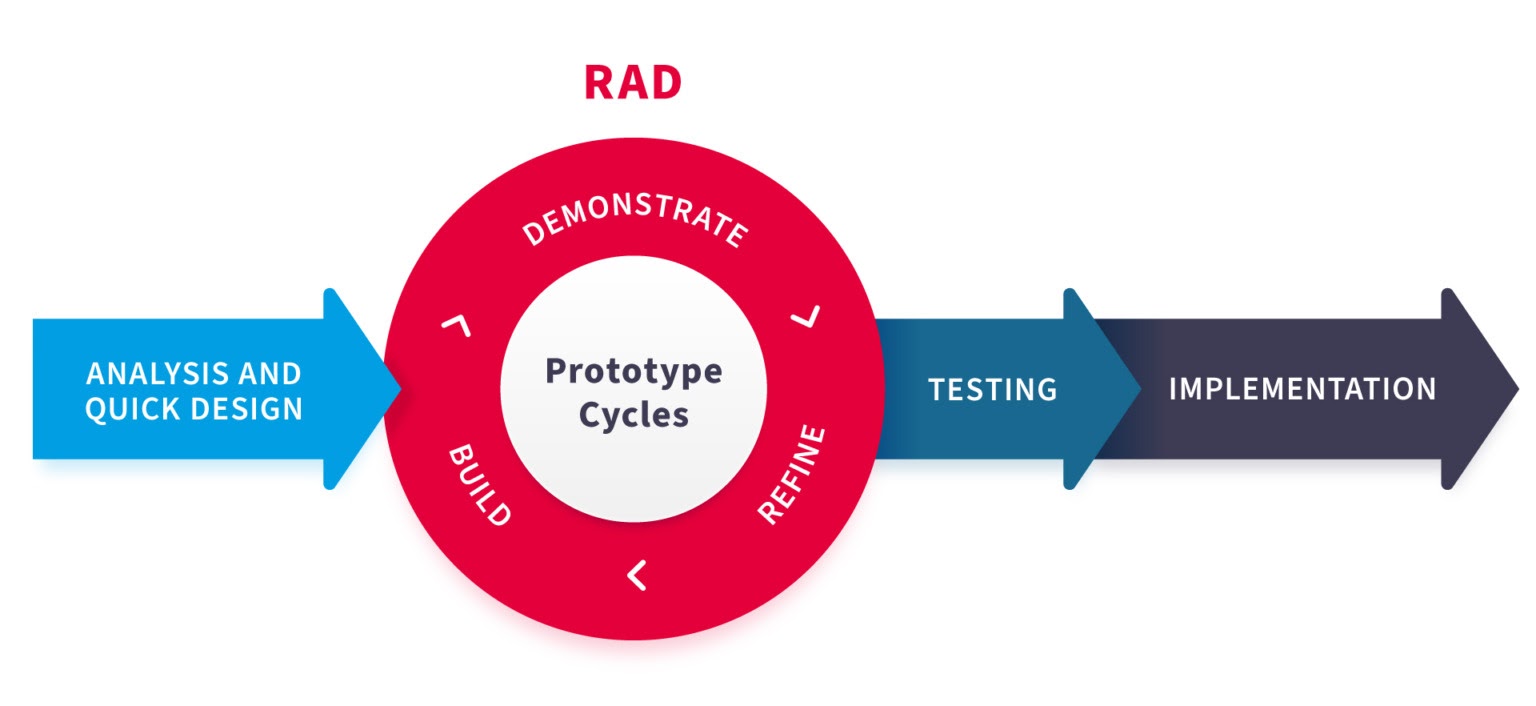Rapid Application Development (RAD) Model
A software project may be done using this paradigm if the project is capable of being split down into distinct modules, whereby each module can be allocated separately to various teams. These components may eventually be merged to produce the final product. The creation of each module comprises several fundamental processes, like in the waterfall model, for example analyzing, designing, coding and finally testing, etc.
Phases of the RAD Model
Requirements Planning:
It incorporates the use of many methods used in requirements elicitation, including brainstorming, task analysis, form analysis, user scenarios, FAST (Facilitated Application Development Technique), etc. It also includes a fully organized plan defining the key data, ways to get it and subsequently processing it to build the final improved model.
User Description:
This phase comprises of receiving user input and constructing the prototype using development tools. In other words, it comprises re-examination and confirmation of the data gathered in the first phase. The dataset characteristics are also discovered and clarified in this step.
Construction:
In this phase, refining of the prototype and delivery take place. It covers the actual usage of sophisticated automated technologies to turn processes and data models into the final functional result. All the essential adjustments and upgrades are being done at this phase.

Cutover:
All the interfaces between the various modules built by distinct teams have to be tested adequately. The use of strongly automated tools and subparts makes testing easy. This is followed by acceptability testing by the user.
Advantages and Disadvantages
Advantages of the RAD Model
Changing needs may be met.
Progress may be quantified.
Iteration time may be minimal with the use of sophisticated RAD tools.
Productivity with fewer workers in a short period.
Reduced development time.
Increases the reusability of components.
Quick first reviews occur.
Encourages client input.
Integration from the very beginning eliminates a lot of integration concerns.
Disadvantages of the RAD Model
Dependency on technically skilled team members for recognizing business needs.
The only structure that can be modularized can be constructed using RAD.
Requires very talented developers and designers.
High dependence on modeling skills.
It is inapplicable to cheaper projects since the cost of modeling and automated code creation is quite expensive.
Management complexity is greater.
Suitable for systems that happen to be component-based and scalable.
It demands user interaction throughout the life cycle.
Suitable for a project needing shorter development durations.

